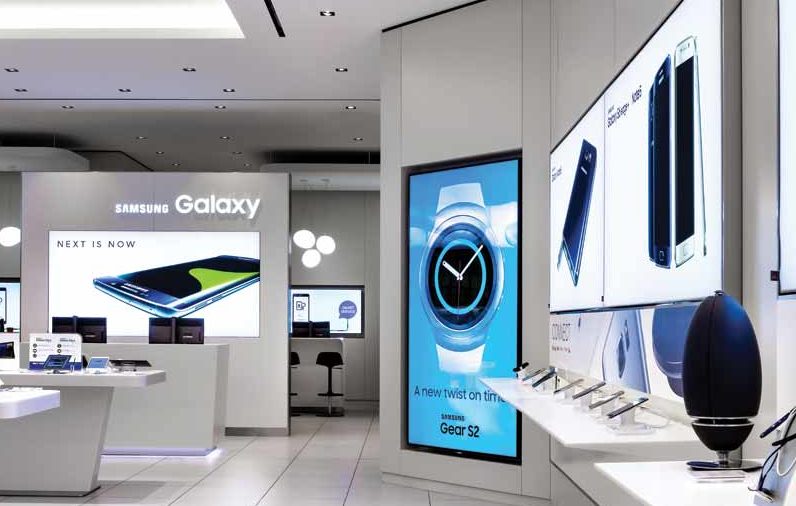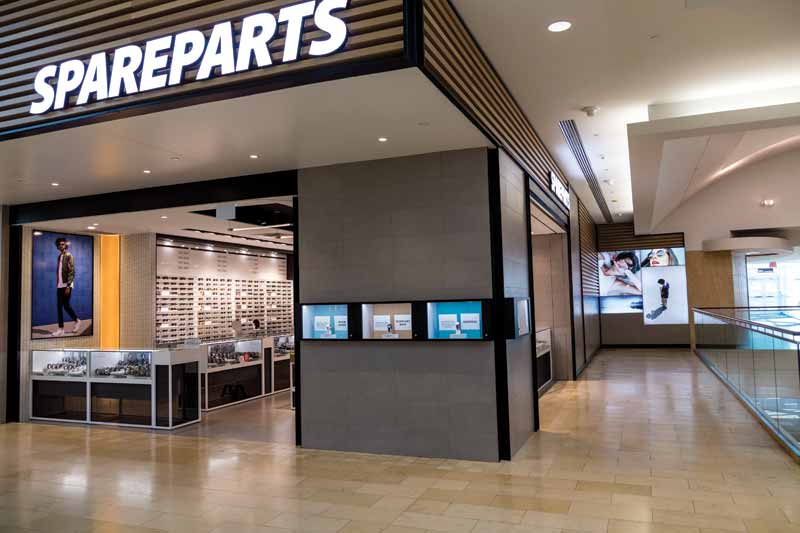POP Displays: The value of dynamic illumination in lightboxes
by all | 3 November 2017 10:57 am
 [1]
[1]By Adam Mitchell
When customers approach a storefront, one of the most important questions for the retailer is: what do they see? Do they see the brand? Do they see the merchandise? Do they see the front windows and what is displayed in them?
Customers actually see the entire retail environment, not just a single aspect of it in isolation. As such, one of the most effective ways to emphasize the visual appeal of a retail space is through dynamic lighting and integrated graphics.
When independent market research agency CQM tested dynamic lighting over a 21-week period in a co-op supermarket group, the study showed sales increased within the affected areas. (A special tracking system, installed in grocery baskets, was able to trace shoppers’ specific movements within each store, including the routes they took and how much time they spent in each department. It turned out they spent more time near ‘warm’ lighting than near ‘cool’ lighting.)
In other words, dynamic lighting not only improves the in-store experience for customers by making it seem more inviting and engaging, but also demonstrably increases revenue for the retailer.
A complementary concept
With respect to in-store lighting, one of the most important—and easily overlooked—aspects is the proper integration of lightboxes. As the sign industry is well aware, the combination of lightboxes with rich, colourful graphics can capture people’s attention, but perhaps less-known is the importance of complementing other existing in-store illumination, in terms of the type, intensity and colour temperature of the lighting.
Traditionally, this matching was difficult to accomplish, as lightbox components were specified with a ’one size fits all’ approach. With today’s light-emitting diode (LED) technology and constant innovation, however, better visual experiences, greater durability and lower costs have been achieved.
Colour temperature
It is important to note ‘colour temperature,’ which is measured in kelvins (K), differs from the aforementioned context of ‘warm’ and ‘cool’ lighting.
Temperatures with high K values represent cool colours, such as bluish white, while those with lower K values are warm colours, ranging from yellowish white to red.
LED lightboxes often use a cool colour temperature, as this the most economical option and has been widely accepted by the sign industry, but it may not fit the characteristics the retailer desires. A warmer colour temperature is a better choice for accentuating and enriching skin tones in printed images, for example, and in some cases for matching a store’s current ambient lighting. It is worthwhile to ask suppliers for a range of alternatives.
 [2]
[2]Photo courtesy Spare Parts
Intensity
Light intensity is measured in lumens per square foot or lumens per square metre. Lightboxes vary significantly in intensity, as there are no general industry standards, so it
is important to test products to see how they mix with ambient illumination.
Type
Not all LEDs are created equal. There are many variables, such as the spacing between each lamp, the lighting angles of the lenses and overall quality.
One of the main reasons it is important to source high-quality, long-lasting LEDs is related to intensity. Over time, LEDs lose their intensity, become dimmer and grow warmer in terms of colour temperature. Signmakers should be sure to ask vendors about the expected useful lifespan of their products (e.g. 50,000 hours).
Frame
Another aspect of lightboxes that needs to be assessed is the quality of their frame. When the frame is combined with the LEDs and the printed graphics, it is a good idea to check if there is any loss of light around the perimeter or, for that matter, in the centre of the graphics. Well-designed frames will not suffer any light loss.
Creating new effects
Today, fabric lightbox systems have been designed to address all of these issues. They are available built to size with custom lighting systems and frames, so as to best suit a given retailer’s environment and branding characteristics. In turn, signmakers have a new opportunity to go out in the field and create exciting and inspiring effects.
Adam Mitchell is marketing manager for The Look Company (TLC) in Barrie, Ont., which specializes in display design and integration for retail and other industries. For more information, contact him via e-mail at amitchell@thelookcompany.com[3].
- [Image]: https://www.signmedia.ca/wp-content/uploads/2017/11/SamsungOpener-e1509721888797.jpg
- [Image]: https://www.signmedia.ca/wp-content/uploads/2017/11/SpareParts.jpg
- amitchell@thelookcompany.com: mailto:amitchell@thelookcompany.com
Source URL: https://www.signmedia.ca/pop-displays-value-dynamic-illumination-lightboxes/